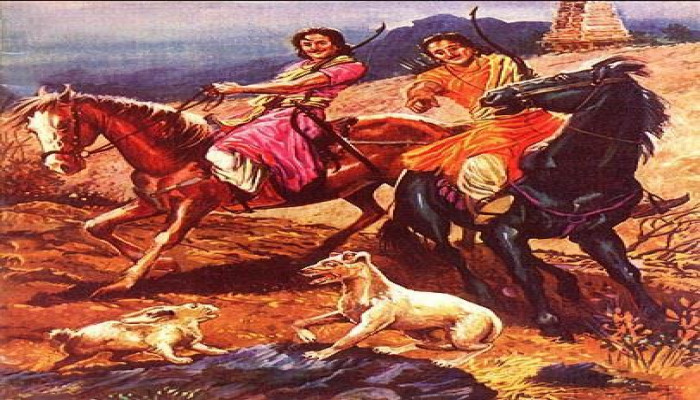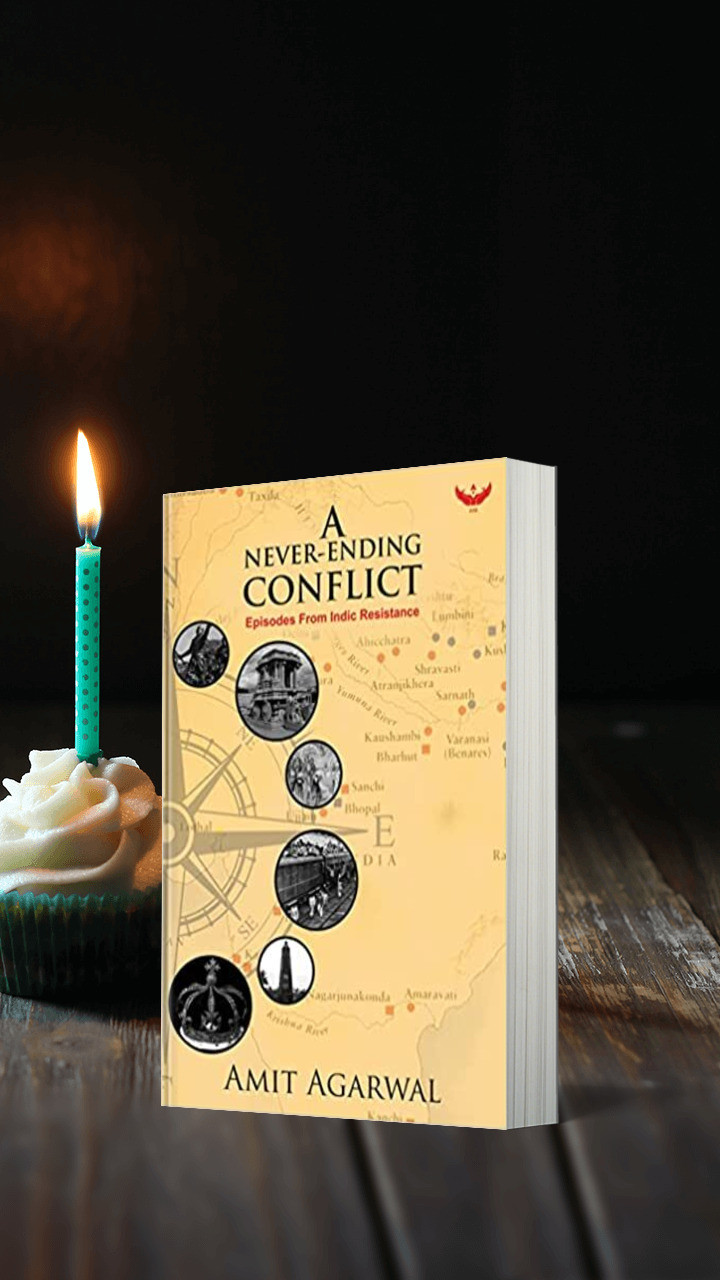The Birth of the Vijayanagar Empire in South India
- In History & Culture
- 07:25 PM, Jan 24, 2023
- Amit Agarwal
Tughlaq’s cousin Bahauddin was the governor of Sagar (south of Gulbarga, in present-day Karnataka), and somehow fell out of favour with Tughlaq. Consequently, Bahauddin had to run away and take shelter in Anegundi (Hampi). Contrary to common sense, he was treated with the utmost respect, given the status of a royal guest and pampered a lot by Kampila. However, the news of his wayward cousin getting a cosy shelter in some nondescript kingdom angered the sultan, and he decided to teach a hard lesson to the kingdom. Soon his forces under the command of Malik Zada swooped upon the harmless domain and laid a siege on their fort. They only sought Bahauddin and promised to return to Delhi. However, Kampiladeva refused their request on the pretext of Bahauddin being his guest. The false notions of Dharamyuddha were again at play, and like other Hindu kings, Kampila, too, did not know how to solve the predicament of honour. For this abstract ideal, he was ready to put himself, his women, and even his entire kingdom at stake.
Siege continued for many days, and soon food stored in the fort began to dwindle. Seeing the gravity of the situation, Kampila finally had to request his guest to run away by jumping over the rear wall. Soon after, he had to open the gates to fight the Islamic army. Kampila’s army was routed in a matter of hours, forcing his womenfolk to commit Jauhar. Kampiladeva’s head was severed instantly in true Islamic tradition and displayed on the fort wall for days. Some say he was skinned alive, put in a giant catapult and fired. In the melee, however, the brothers Harihar and Bukka managed to flee and took shelter in nearby forests. The sons of Kampiladeva were arrested and enslaved and Tughlaq brought them to Delhi. He pardoned them only when they acquiesced to convert to Islam.
After running away from Anegundi, Bahauddin sought shelter from the neighbouring Hoysala king Veera Ballala III. Displaying realpolitik, he promptly imprisoned the refugee and handed him over to Zada. The latter took Bahauddin to Delhi, where he was skinned alive like his benefactor Kampila and his body was stuffed with straw and displayed prominently in Delhi. Such was Tughlaq’s love for the macabre violence that he got Bahauddin’s flesh cooked with rice and sent it to his wife and children, who were forced to eat it.
Though Kampila met a brutal end, he managed to light a spark among the Hindus. Harihara, Bukka and their brothers managed a comeback and sought to establish a kingdom that would act as a bulwark against Islamic rule since they had witnessed the gory violence and savagery of the Islamic army from close quarters. At Hampi, they happened to meet a rishi named Vidyaranya of Shringeri doing tapasya, who told them about the holy place of Hampi, which belonged to various gods and goddesses. They then narrated the rishi about an unusual sight they saw during a hunting mission. A deer chased by a fox suddenly turned courageous and started chasing back the predator. Vidyaranya told them that Hampi was special and appropriate for their capital. Like a true rishi, he also used his influence to secure critical financial support for the brothers in the initial period of the Empire.
The seed of a mighty empire was thus sown. It would protect Southern India from Islamic invasions for three centuries. The rishi also exhorted them to create a state where Hindus could live without fear. As they found the place pious and holy, they decided to make it their capital city. Adding to the piety was the area's rugged topography, with hills all around the city, providing natural protection. In the end, Vidyaranya's blessings and proximity and the influence of the monastic order of Sringeri indeed helped provide legitimacy to the founder kings of a new kingdom.
In another account, Harihara and Bukka were taken to Delhi as prisoners when Muhammad bin Tughlaq, Caligula of India, defeated the King of Warangal. Both were then forced to convert to Islam. Harihara and his brother eventually managed to escape from the captivity and reconverted under the guidance of the sage Vidyaranya, which might have been the first ghar-wapasi in Hindu history. It would eventually prove to be a turning point in Deccan medieval history.
The city had many names over the years. The capital city was once called Virupaksha Pattana, as the town was under the protection of the local deity Virupaksha, a form of Lord Shiva whose shrine was already there. Later, a huge and magnificent temple was built in his dedication. Another name floated was Vidyanagar in honour of the rishi. Vijayanagara was the name that came to be universally recognized.
The Vijayanagara Empire reached another peak under Krishnadeva Raya during 1503–1509 CE. Like Deva Raya, his empire too encompassed the southern peninsula and successfully repelled several invasions from the Islamic Deccan Sultanates from the North and East. Krishnadeva Raya kept on expanding his empire, encompassing the whole area, South of Hampi. During peacetime, he spent his energies building splendid temples and monuments in and around Hampi.
Such was the opulence of the city that contemporary Portuguese commanders often compared Hampi with European cities. At the peak of its glory, during the early 1500s, with a population of about 500,000 and sixty square miles of area, Hampi was the second largest city in the world after Beijing. The city had a cosmopolitan outlook and had a distinct Persian Islamic influence in the structures such as the Lotus Mahal or the Queen’s Bath. The Persian high culture, which the neighbouring sultans so desperately tried to emulate, must have crept into his kingdom too. He eventually became the most powerful Hindu king, having the most widespread empire in the Indian landmass in his era. Unlike other Hindu kings who excelled in snatching defeat from the jaws of victory, Krishnadeva Raya converted many losing battles into triumphs.
One may recall this kingdom through the popular tales of Tenali Ramakrishna. He held an important position in King Krishnadeva Raya’s court and was one of the Ashtadiggajas appointed by the king. He was a poet, scholar, thinker and special advisor in the court, generally known for numerous folk tales focusing on his wit. However, with riches, it also brought complacency, chiefly among its soldiers. They also began to recruit Muslims in the army to give it a lethal edge. However, Hindu kings did not bargain for their treachery. In the final battle at Talikota in 1565 against Bahamani Sultans, they jettisoned the Hindu ship at the first opportunity and joined the forces of Sultans.
In the catastrophic battle, after crushing the Hindu army, Muslims, like a pack of hyenas, descended on the capital city of Hampi and ransacked it completely. Within a few days, every house, building, temple and palace was burnt down, so much so that the city subsequently came to be called ‘Haalu Hampi’ (ruined Hampi).
Perhaps for the first time in its history, the southern part of India watched, in horror, the brutal jihad to which other parts of India had already become quite used.
Image provided by the author.
Disclaimer: The opinions expressed within this article are the personal opinions of the author. MyIndMakers is not responsible for the accuracy, completeness, suitability, or validity of any information on this article. All information is provided on an as-is basis. The information, facts or opinions appearing in the article do not reflect the views of MyindMakers and it does not assume any responsibility or liability for the same.







Comments